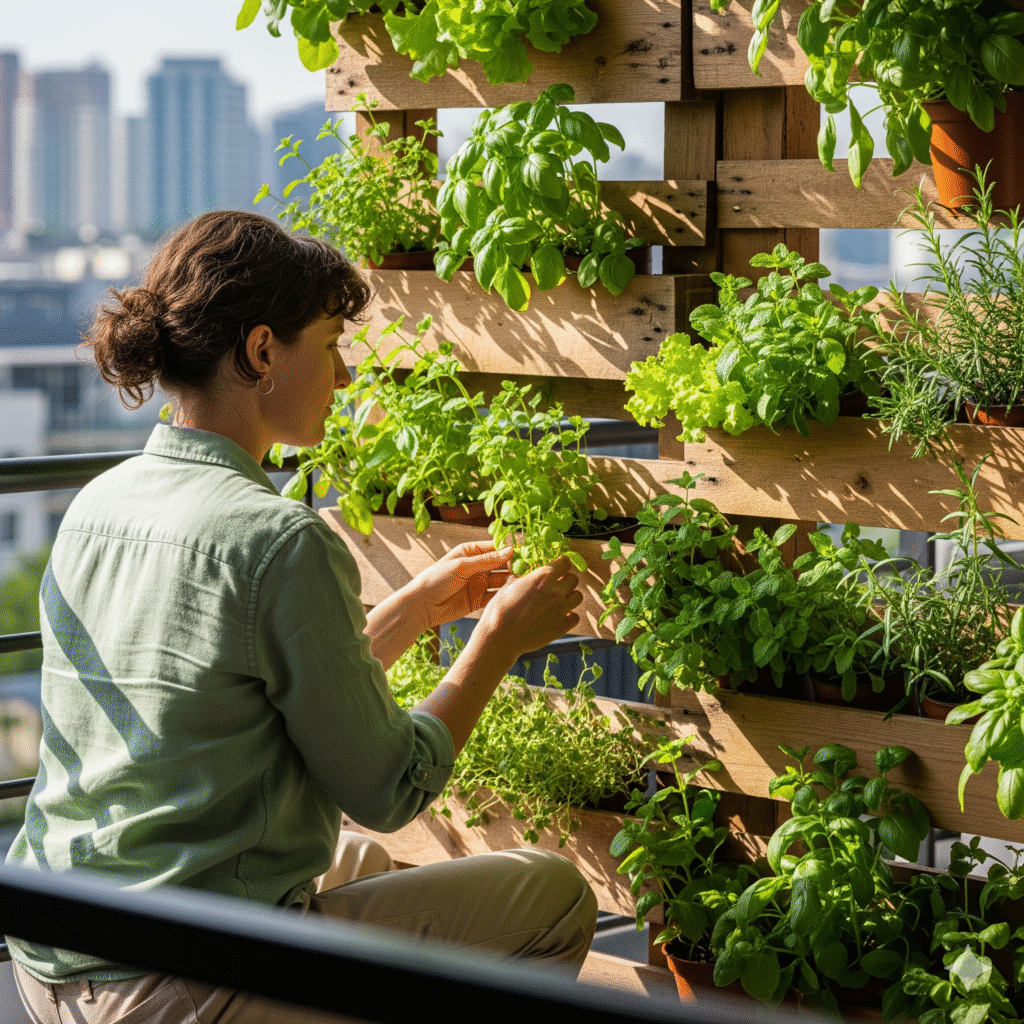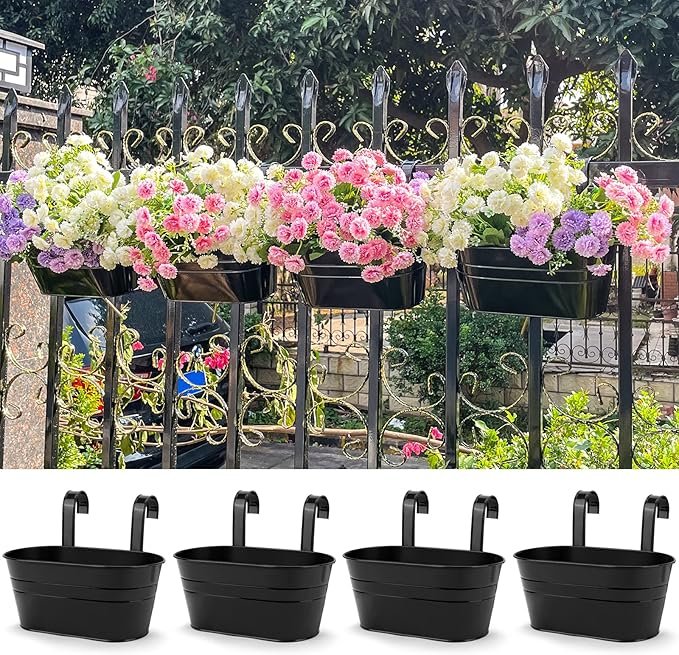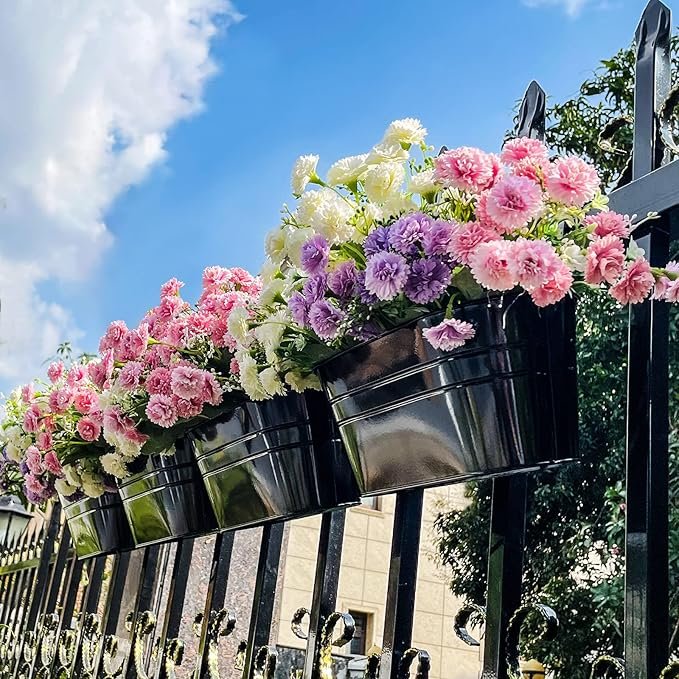Your eyes feel strained. Your thumb aches from scrolling. Your mind is a buzzing hive of notifications, headlines, and the endless, low-grade hum of being perpetually online. You feel a deep, nagging urge to disconnect, to do something real, tangible, and quiet. But where do you even start?
What if the most powerful antidote to screen fatigue wasn’t an app or a wellness retreat, but a small patch of green you could build with your own two hands? Imagine replacing one of your walls—a space you might glance at while checking your phone—with a living, breathing screen of vibrant green.
This is your official invitation to trade screen time for green time. This is the ultimate guide to building a vertical garden for your digital detox. We’re going beyond a simple DIY project. We’re embarking on a journey to create a personal sanctuary, a tool for mindfulness, and a physical anchor for your new unplugged routine. It’s time to put the phone down, step outside, and cultivate a calmer mind, one plant at a time.

Table of Contents
Why a Vertical Garden is the Perfect Unplugged Project
Before we talk about wood and soil, let’s explore the philosophy. In a world that values speed and virtual connection, a garden—especially one you build yourself—is a radical act of slowing down and reconnecting with the physical world.
- It’s a Tangible Accomplishment: The digital world is ephemeral. Emails are answered, feeds are scrolled, and at the end of the day, what do you have to show for it? A vertical garden is real. You can touch it, smell it, and watch it grow. The satisfaction of stepping back and seeing what you’ve built provides a sense of accomplishment that no “like” can ever replicate.
- It Fosters Patience: A plant will not be rushed. It grows according to its own quiet, steady rhythm. In a culture of instant gratification, tending a garden is a powerful lesson in patience and process. It teaches you to let go of the need for immediate results and find joy in the slow, deliberate journey of growth.
- It’s a Full Sensory Experience: A digital detox is about pulling yourself out of your head and into your body. Gardening is a feast for the senses. The earthy smell of the soil, the feeling of a cool leaf, the sight of a new bud, the taste of a freshly picked herb—these sensory details ground you in the present moment in a way no screen ever can.
- It’s a Sanctuary for Any Space: You don’t need a sprawling backyard to find your peace. The beauty of vertical gardening is that it transforms any small, forgotten space—a balcony, a patio wall, a sunny kitchen window—into a vibrant pocket of nature. It proves that an unplugged sanctuary is possible for everyone.
The Mindful Foundation: Choosing Sustainable Materials
Part of this digital detox is disconnecting from the cycle of mindless consumption. The very act of sourcing materials for your garden can be a rewarding, real-world treasure hunt that turns waste into wonder.
Reclaimed Wood & Pallets
The ultimate symbol of upcycling, giving old wood a new purpose is deeply satisfying.
- The Hunt: Scouring local marketplaces or connecting with local businesses for discarded pallets is an adventure. It’s a real-world quest that replaces the endless scroll.
- What to Look For: Always choose heat-treated (marked with an “HT” stamp) pallets. Avoid any marked with “MB” (Methyl Bromide), as these have been treated with toxic chemicals you don’t want near your soil.
- The Feel: Working with weathered wood is a tactile experience. The grain, the imperfections—they all tell a story, adding character to your garden that a store-bought kit could never have.
Upcycled Containers
Look around you. A potential planter is everywhere.
- Plastic Bottles & Cans: With a little creativity, plastic soda bottles, and tin cans can be mounted on a wall to create a quirky, colorful, and incredibly budget-friendly vertical garden. The act of transforming trash into something beautiful is a powerful mindset shift.
- Old Gutters: Rain gutters are perfectly shaped for holding soil and growing shallow-rooted plants like lettuce, spinach, and herbs. Mounting a few sections horizontally on a wall or fence is a brilliant use of space.
Natural & Woven Materials
Tap into ancient, timeless crafts for a truly unplugged experience.
The Blueprint: Designing Your Vertical Sanctuary
This planning stage is a practice in slow, mindful observation. It’s about understanding your space and designing with intention.
Finding Your Spot: A Practice in Observation
For a day, leave your phone inside and become a student of your own space. Where does the sun fall in the morning? Where does it rest in the afternoon? Most vegetables and herbs need at least 6 hours of direct sunlight. This simple act of watching the light move is a powerful way to reconnect with the natural rhythms of the day.
Water and Flow
Consider the practicalities. How will you water your garden? A spot near a rain barrel or hose is practical. If it’s on a balcony, you’ll likely be hand-watering. Think about drainage—you don’t want water running down your wall. Planters with built-in drainage or a simple gutter at the base can solve this.
Choosing Your Structure
- Wall-Mounted vs. Freestanding: Will your garden be fixed to a wall, fence, or railing? Or will it be a freestanding structure you can move?
- Pockets vs. Trellis: Are you planting in individual containers/pockets, or are you creating a structure for climbing plants to grow up? Your choice of plants will help guide this decision.
A Simple Start: The Ready-Made Option
If sourcing and building from scratch feels like a big first step, don’t let it stop you from starting your unplugged routine. You can jump right into the mindful act of planting with a simple, ready-made planter.
- Our Pick for an Easy Start: We recommend a Fabric Pocket Wall Planter. These are often made from durable, recycled felt, making them a sustainable choice that’s incredibly easy to hang on any wall, fence, or balcony railing. They provide excellent drainage and aeration for happy plants. It’s a fantastic way to jumpstart your vertical garden project in a single afternoon.

The Build: Your Step-by-Step Pallet Garden Project
Let’s make this real. A pallet garden is one of the most popular and rewarding ways to start. Here’s how to turn that reclaimed pallet into a living wall.
Step 1: Source a Safe Pallet
As mentioned, this is crucial. Find a pallet with the “HT” stamp. Avoid anything that looks oily, stained, or has the “MB” stamp.
Step 2: Gather Your Analog Tools
You don’t need a fancy workshop.
- Work gloves
- A pry bar (to remove any unnecessary boards)
- A sander or sandpaper (this is the mindful, tactile part!)
- A staple gun
- Landscape fabric (two layers for durability)
- A drill (the one power tool you’ll appreciate)
- Screws and mounting hardware
Step 3: Prep and Sand
Clean the pallet well with soap and water. Once dry, spend some time sanding down the rough surfaces. Don’t rush this. Focus on the feeling of the wood smoothing out under your hands. This is your chance to be fully present with the material.
Step 4: Create the Pockets
Lay the pallet down on its back. You will be turning the slats into planters. Measure and cut your landscape fabric so it’s wide enough to be stapled to the front and back board of a slat, creating a deep U-shaped pocket inside. Use plenty of staples to ensure it’s secure. Repeat for all the sections you intend to plant.
Step 5: Mount and Secure
A filled pallet garden is very heavy. Securely mount it to a sturdy wall or fence before you add soil. Use heavy-duty brackets and screws appropriate for the surface you are drilling into.
Step 6: Fill with Soil
This is the ultimate grounding moment. Using a trowel or your hands, fill each fabric pocket with a high-quality potting mix. Mix in some compost for extra nutrients. Feel the cool, rich soil. This is the foundation for the life you are about to cultivate.
Bringing It to Life: Planting for a Sensory Experience
Choose plants that will delight your senses and calm your mind. This isn’t about maximizing yield; it’s about maximizing joy.
- For Scent & Calm: Plant Lavender, Mint, Rosemary, and Lemon Balm. Simply brushing past them will release their therapeutic aromas.
- For Touch & Texture: The fuzzy leaves of Lamb’s Ear or the intricate foliage of Thyme provide a wonderful tactile experience.
- For Wall-to-Table Taste: There is nothing more grounding than harvesting your own food. Leafy Greens (lettuce, spinach, arugula), Strawberries, and culinary herbs like Basil, Parsley, and Chives do beautifully in vertical gardens.
- For Sight & Joy: Brighten your wall with edible flowers. The vibrant colors of Pansies, Violas, and Nasturtiums are a feast for the eyes and a delightful addition to salads.
The Routine: Tending Your Garden as a Mindfulness Practice
Your garden is built. Now, the real detox begins. Integrate it into your daily life with a simple, screen-free ritual.
Your 10-Minute Daily Disconnect
Commit to spending just ten minutes with your garden each day, preferably in the morning before the digital world intrudes.
- Observe: Look closely. What’s new? Is there a new leaf? A tiny bud? Notice the details.
- Water Mindfully: As you water, focus on the sound of the water and the sight of it soaking into the soil. Think of it as an act of giving, of nurturing.
- Prune & Tidy: Snip off any yellowing leaves. Harvest a few sprigs of mint for your water or basil for your lunch. This simple act of tidying and harvesting is deeply satisfying.
- Just Be: For the last couple of minutes, simply be present with your garden. Take a few deep breaths. Feel the sun or the breeze. This is your sanctuary.

Your Unplugged Life is Growing
You didn’t just build a vertical garden. You built a reason to log off. You crafted a tool to practice patience, a space to engage your senses, and a sanctuary for quiet reflection. You’ve taken a small, forgotten space and turned it into a source of life, beauty, and peace.
This living wall will become an anchor for your unplugged routine, a constant reminder that the most profound connections don’t require a signal.
Are you ready to trade your screen for some green? Share which part of building a vertical garden you’re most excited about in the comments below!